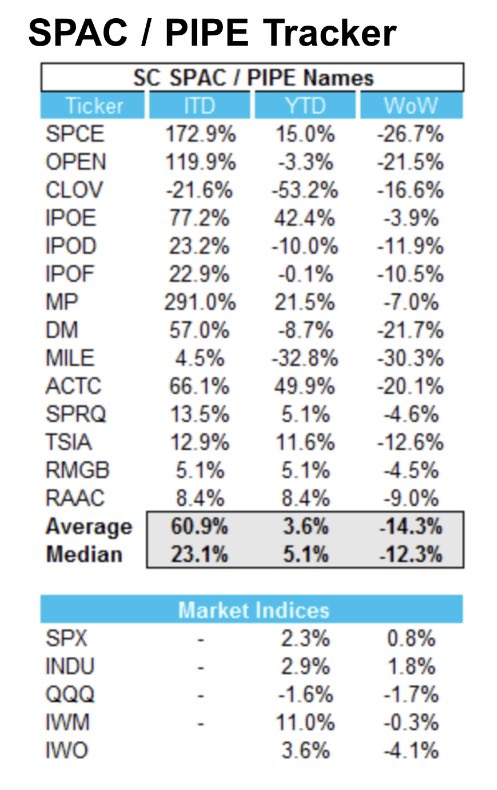
A quick recap of what's happened since early March highs in tech markets:
1. Fears of inflation have driven many institutional investors to the hills. They are unwinding trades that have worked for DECADES.
1. Fears of inflation have driven many institutional investors to the hills. They are unwinding trades that have worked for DECADES.
2. Factor rotation out of tech and into more defensive/cyclical stocks that tend to do better during times of inflation.
3. Commodities have spiked which tend to do better during inflation
4. Bonds have puked as yields have risen as they forecast inflation.
3. Commodities have spiked which tend to do better during inflation
4. Bonds have puked as yields have risen as they forecast inflation.
5. $1.9T stimulus bill; potential for $3T infrastructure bill and another several trillion stimulus bill in the offing will give inflation fears more juice.
6. Pensions and others are going through a big rebalancing through Q1 which isn't done.
6. Pensions and others are going through a big rebalancing through Q1 which isn't done.
There are no easy answers for the next several weeks except to go back to work and re-underwrite everything we own. Look at our forecasts, look at our sizing, look at the risk and be ok owning them as we stress test our holdings under various potential scenarios.
😅🤞
😅🤞
PS this is when I would encourage anyone whose instinctive reaction is "diamond hands" to at least do the work up front before you reply.
Early in my investing life, I would respond to fear of the unknown with bravado. Then I would usually lose a ton of money...
Good luck.
Early in my investing life, I would respond to fear of the unknown with bravado. Then I would usually lose a ton of money...
Good luck.
• • •
Missing some Tweet in this thread? You can try to
force a refresh





